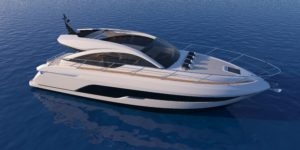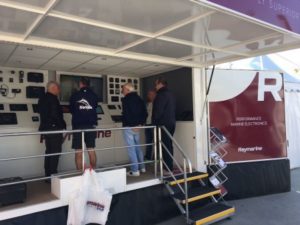The dramatic shipwreck and death-defying rescue which made headline news 70 years ago
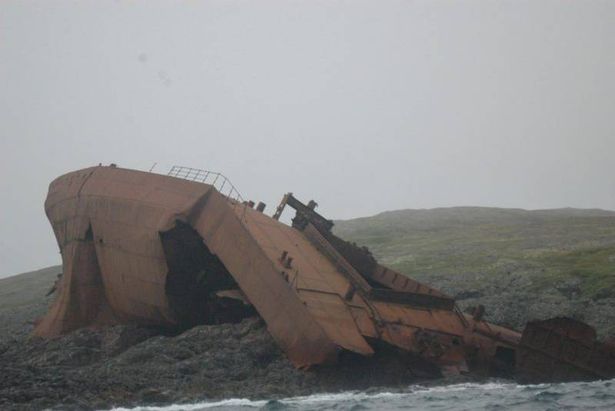
It created intrigue in Nottingham, the home of one of the survivors. Andy Smart follows the story of the SS Langleecrag:
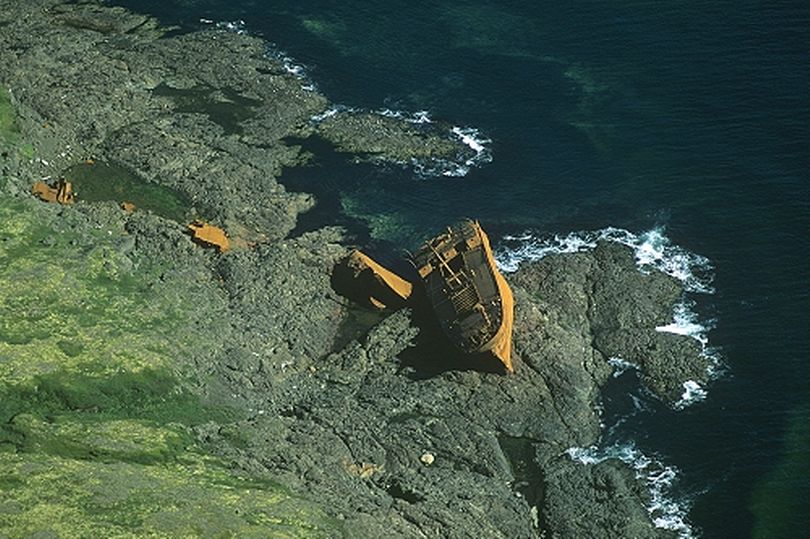
An aerial photograph from 20 years ago, showing the wreck of the Langleecrag on the rocks of Great Sacred isle.
Laden with grain, the SS Langleecrag, sailing from Hull to Montreal, eased past the rocky coast of Newfoundland.
But bad weather was closing in. Dense fog and heavy rain made conditions difficult, visibility was down to yards… and that was almost certainly what caused the tragedy.
As the Langleecrag approached the entrance to the Strait of Belle Isle, the ship’s mate mistook the location of a direction light, leading the 6,000 ton vessel onto the rocks.
As the waves pounded the stricken vessel, two crewmen named William Colling and Anderson, attempted to get a lifeline to the shore, but they were swept away by the force of the sea and drowned.
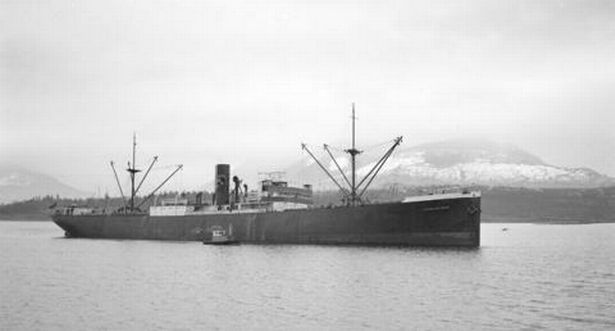
The SS Langleecrag pictured before it sailed on its last voyage to Canada 70 years ago.
The body of Colling is buried in a small graveyard in Flower’s Cove about 50 miles from the rusting hulk of Langleecrag.
There was no chance to save the ship as its back was broken. And then the boiler exploded.
Taking to the lifeboats, the 41 survivors including a crewman named J Orrey, who was from Nottingham, managed to find relative safety on tiny, barren, storm-swept Sacred Isle off the bleak Newfoundland coast.
Their only shelter was a sheet of tarpaulin. There was no fresh water and what scanty meals they could prepare, had to be cooked in a bucket. Marooned by the fog and rain, the shipwrecked crew waited for rescue.
Five days passed before a break in the curtain of mist enabled them to get a glimpse of the mainland. Out in the storm they saw a British aircraft carrier, Empire MacCallum, waiting for a chance to get close and rescue them.
Second Officer Ivan Caley, a Newcastle man, rigged up a semaphore device with a sheet and an oar and was able to signal to the ship about their plight. They were hungry, thirsty and suffering from the deadly effects of exposure. Rescue had to come soon or it might be too late.
Anxiously, the 41 men saw the Empire MacCullum launch a boat with 14 oarsmen on board, but as it was tossed around the heaving sea, it smashed against the side of its ship and was then driven by the waves towards the mainland.
One of the stroke oarsmen would later write, “I regret to write that the combined strength of 14 men was in the end no match for the elements.”

All that remains of the 6,000 ton SS Langleecrag, which ran aground off the coast of Newfoundland 70 years ago. Two of the 43 crew drowned but Nottingham man J Orrey was among the survivors.
But, just as all hope seemed lost, a Norwegian whaler called the Olaf Olsen arrived on the scene.
The ship’s captain refused to risk his vessel, but because she was in Newfoundland waters, the pilot Harold Calloway was in command. The Olaf Olsen crew shot a harpoon with a heavy line onto the shore and used it to shuttle a lifeboat back and forth to rescue the stranded men.
Story by Andy Smart in NottinghamshireLive


